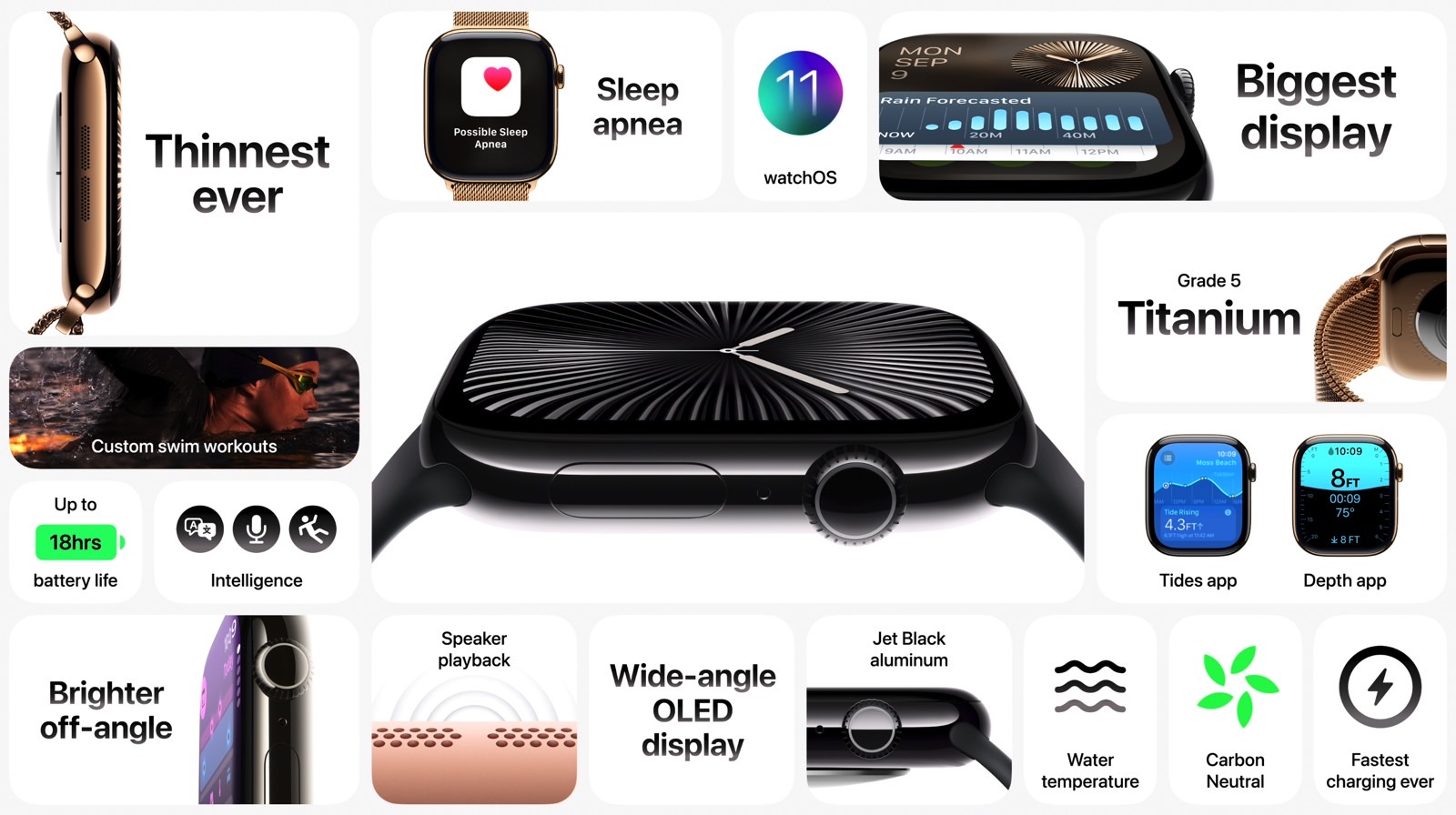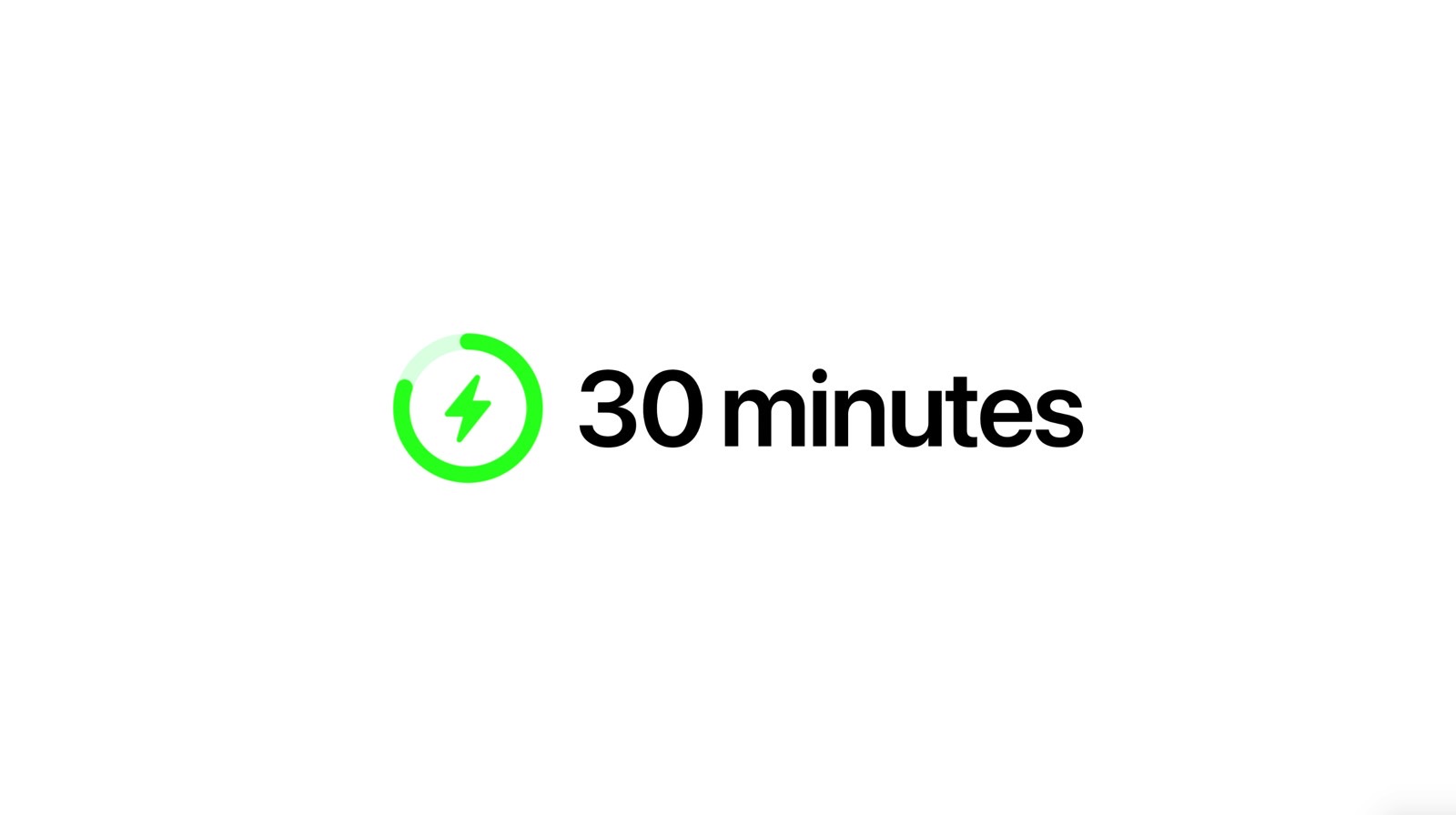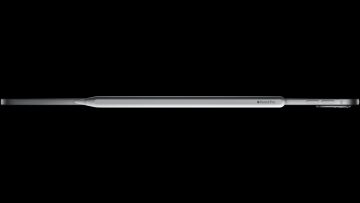Apple introduced all the expected new products during its September event on Monday, including the one I’ll buy first. I train for and run marathons, and the Apple Watch Series 10 will be my next purchase. I use the Apple Watch SE 2 right now, and it’s been a great companion for the last couple of years. However, battery health has dropped to 80%, forcing me to recharge it twice daily.
Before Apple’s event, I wanted the Apple Watch Series 10 for the extra health tracking features the main wearable in Apple’s lineup would offer compared to the Watch SE. The improved battery life was just an additional perk. But now that Apple unveiled the Series 10, I know I’m getting an incredible battery upgrade.
The Apple Watch Series 10 needs just 30 minutes to recharge from 0% to 80%, making it the fastest-charging Apple Watch ever. The Series 9 requires 45 minutes to reach the same percentage. None of Apple’s iPhone models can reach 80% in 30 minutes. If you ask me, it’s an even bigger deal than the lackluster iPhone 16 that Apple unveiled on Monday.
The new iPhone 16 models all feature better battery life than their direct predecessors. On paper, wired charging speed is still capped at 20W, though I expect speeds to be close to 30W in real life. As with previous models, Apple says you’ll get a 50% charge in 35 minutes of wired charging.
What changed is that Apple also boosted its MagSafe charging speeds. If you use a MagSafe Charger paired with a 30W adapter or higher, you’ll get to the same 50% charge in 35 minutes.
As a longtime iPhone user, I never really cared about charging speeds that match what’s available on Android. Battery health is more important in the long run, so I don’t even want to charge my phone with more than 20W or 30W of power.

The Apple Watch Series 10 has a much smaller battery, of course. But it needs just 30 minutes to reach 80% capacity using the magnetic charger in the box. My Apple Watch SE 2 doesn’t have fast charging support. It can’t even match the Series 9’s charging speed.
Also, the Apple Watch Series 10 still offers up to 18 hours of battery life, the same estimate Apple has used since the first-gen model.
So why is charging speed so important on a wearable? First of all, I use the Apple Watch to track my sleep. Therefore, I don’t want to charge the battery while I sleep at night. I have to find time to recharge it during the day. It takes me well over an hour to recharge my current Apple Watch SE.
As I age, I’ll have to deal with medical conditions that could benefit from constant monitoring. I’d want to limit the time I spend without an Apple Watch on my wrist.
Think about heart issues like irregular rhythms that older adults might experience. You’d want the Apple Watch to tell you if it detects atrial fibrillation and monitor the condition for you. But the thing with AFib is that you won’t know when you’re about to experience an episode. The shorter the period spent without a wearable, the more likely you’d catch it.

Sleep apnea tracking is another condition that warrants constant tracking, and it’s coming to the Apple Watch Series 10, Series 9, and Ultra 2. You’ll want the wearable to monitor all your naps, not just your sleep at night.
Reaching to 80% charge in just 30 minutes could ensure you’re covered at all times. Did you forget to charge it during the day? A few minutes of charging before you go to sleep should be enough to get you through the night.
Since I mentioned marathon training, I have to say that I like the idea of getting an 80% charge in just 30 minutes. This will reduce my battery anxiety and let me focus on the run. While the Apple Watch SE 2 got me through a marathon, there are often times that I cut it too close for comfort, and my watch battery gets too low.
With all that in mind, I’ll always prioritize charging speeds when buying a new smartwatch. The Apple Watch Series 10’s battery tech is a big reason to upgrade to this model.








